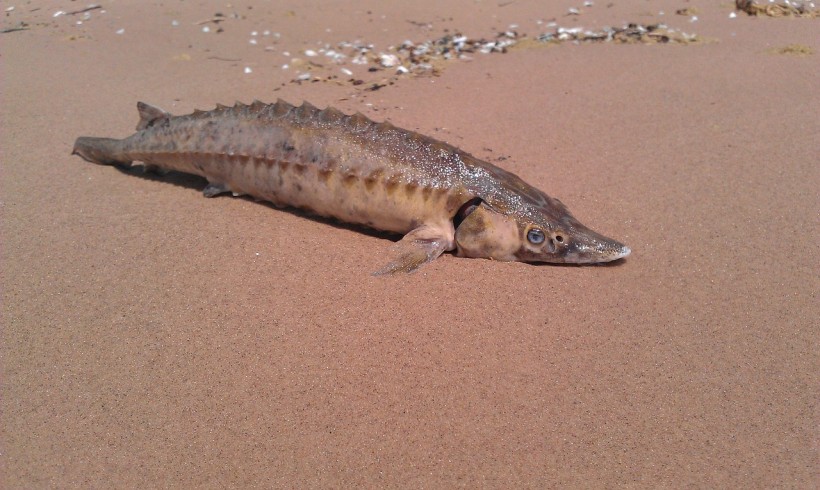A sturgeon is a living fossil, meaning they are fish with progenitors that predate dinosaurs by more than 200 million years, as per an article in Frontier for Young Minds. Sturgeons may grow to be higher than people or over 2 meters, heavier than humans weighing over 160 kilograms, and live as long as humans.
They live in the sea and spawn in rivers, which they normally return every three to five years. Recently, CBS News reports that a photographer found a corpse of an Atlantic sturgeon washed up on an East Coast beach.

Corpse of a Rare Atlantic Sturgeon That Lived During the Time of Dinosaurs Washed Up on East Coast Beach
Atlantic Sturgeon on the Beach
On Assateague Island, a photographer captured images of prehistoric and endangered fish that washed up on the shore. Atlantic sturgeon can be found from Canada to Florida. According to the National Oceanic and Atmospheric Administration (NOAA), they hatch in freshwater rivers and then swim out to sea as they get larger. When they reach adulthood, they return to rivers to lay eggs.
The fish may live up to 60 years and grow up to 14 feet long and weigh 800 pounds. They look like prehistoric creatures, which they are, as they lived alongside dinosaurs hundreds of millions of years ago. That is why they are also known as "living fossils," which means the species has gone virtually unchanged over that time as per a study from the University of Michigan.
However, NOAA said that their rareness is due to the fact that these fish are endangered species. Their threats include fishing gear, boats, habitat degradation, and habitat impediments.
Allen Sklar, the photographer who shot the image of the Atlantic sturgeon washed up on the beach, said he saw it last month and found that it measures 37 inches. This is not the first time he photographed such fish since he also had the chance to photograph one in 2016 on the Assateague Island National Seashore.
READ ALSO: Great Lakes' Dinosaur: Impressive Prehistoric "Dinosaur" Fish Caught in Kansas River
Living Fossils in a Modern World
According to the International Commission for the Protection of the Danube River (ICPDR), surgeons are ancient migratory fish that are now close to extinction as it is classified under the most threatened category in the IUCN list.
These fish rely on an interlinked network of habitats, providing them with suitable conditions to feed, migrate, and spawn. As they are loyal to their spawning sites, they go back to these places. However, they are very sensitive to habitat changes as well, so river engineering changes have seriously affected their population in recent years due to the loss of suitable habitats in the Danube River Basin.
For the ICPDR, surgeons are considered flagship species that are excellent indicators of a range of improvements in river morphology, chemical water quality, and permeability. Therefore, preserving the habitats and dynamics that satisfy their needs is necessary to protect the population of these living fossils.
RELATED ARTICLE: Massive 'Living Dinosaur' Sturgeon 10-Feet Long, Weighs 600 Pounds Captured, Tagged and Freed in British Columbia [Watch]
Check out more news and information on the Sturgeon in Science Times.














